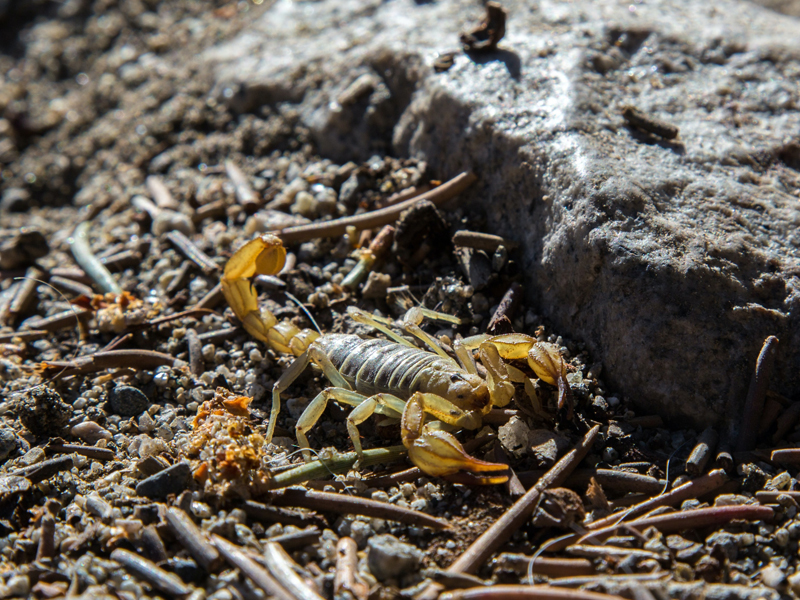There are a lot of creepy, crawly creatures out there that look very strange that have a bad reputation, but you’d be surprised to learn that myths contribute to their notoriety. Here are a few examples of the desert tarantula and scorpion and their debunked misleading myths.
Tarantula
These creatures are very funny-looking. They have hair all over their bodies, and some of these hairs on top of their abdomen are specialized for defense. These urticating hairs are tipped with backward-pointing barbs. When the tarantula is threatened, it brushes these hairs towards its attacker’s body. These hairs are irritating and very difficult to remove because of the barbs. Female tarantulas can live for 25-30 years, while males only live ten to twelve years, at which time they leave their burrows in search of females. Tarantulas also molt their exoskeleton as they grow. One of the most-interesting parts of the tarantula is their fangs, which they use to subdue their prey with venom.
Tarantulas are aggressive and will chase you.
Myth: Tarantulas are not aggressive, but if they feel threatened, they could run towards you a short distance. . Most do not want to leave the safety of their burrows, because they do not want to be overly exposed. They move very quickly but only in short distances.
Desert Tarantulas can jump 5, 6, 7 feet in the air.
Myth: This is not true. The desert tarantula does not jump up to 7 feet in the air! The next time you are lucky enough to spot a tarantula in the wild watch them closely and make your own observations.
Desert Tarantulas are poisonous.
Myth: This is not true. Tarantulas are not poisonous, but they are venomous. Venomous animals bite (or inject venom), and poisonous animals are ones you eat. Most of them do not ‘bite’ unless threatened.
Desert Tarantulas catch prey in webs.
Fact: Tarantulas make webs, but they are used differently than a spider’s web. They line their burrows with silk and provide a prey detection system at the opening of the den, or they will use their webs to make a mat to molt on. They can even create a guide thread to help them keep track of where they have been.
Scorpions
There are more than 30 species (or different types) of scorpions found in Arizona. The three most common is the bark scorpion, stripe tailed scorpion and giant hairy scorpion. Scorpions have predators, which include other scorpions, elf owls, pallid bats, lizards and small snakes.
Scorpions are born alive.
Fact: Scorpions give birth to live young. When the babies are born, they crawl on their mothers back until their first molt. If they fall off, they could become mom’s lunch!
Scorpions glow in the dark.
Fact: Scorpions fluoresce or ‘glow in the dark’ under ultra-violet light. You can take a black light out to the desert during a warm evening and will be amazed of how many you can find.
Scorpions bite.
Myth: Scorpions do not have teeth, so they cannot bite. However, they do have a large stinger on their tail that hurts when it stings to deliver its venom. This stinger is used for defense or to paralyze their food. They also have large claws at the front of their bodies, but those are less for defense and more for holding on to prey.
Scorpion stings can be fatal.
Fact: If stung by a scorpion, it may hurt, but death is highly unlikely. Only the bark scorpion has a sting that is considered potentially life threatening. Today there is anitvenins that make deaths even rarer which is good news. If you are concerned about a scorpion sting, contact a medical professional for advice.
Larger scorpions are more dangerous.
Myth: The most dangerous scorpion is the bark scorpion, which is also the smallest species of scorpion in Arizona. The bark scorpion is actually about the size of a nickel, but size does not correlate to the potency of its venom or the damage it can inflict. Any size scorpion can be a nuisance and can cause painful stings.
As you can see, there are a lot of myths about tarantulas and scorpions out there. The world would not be the same without these creepy, crawly creatures.


